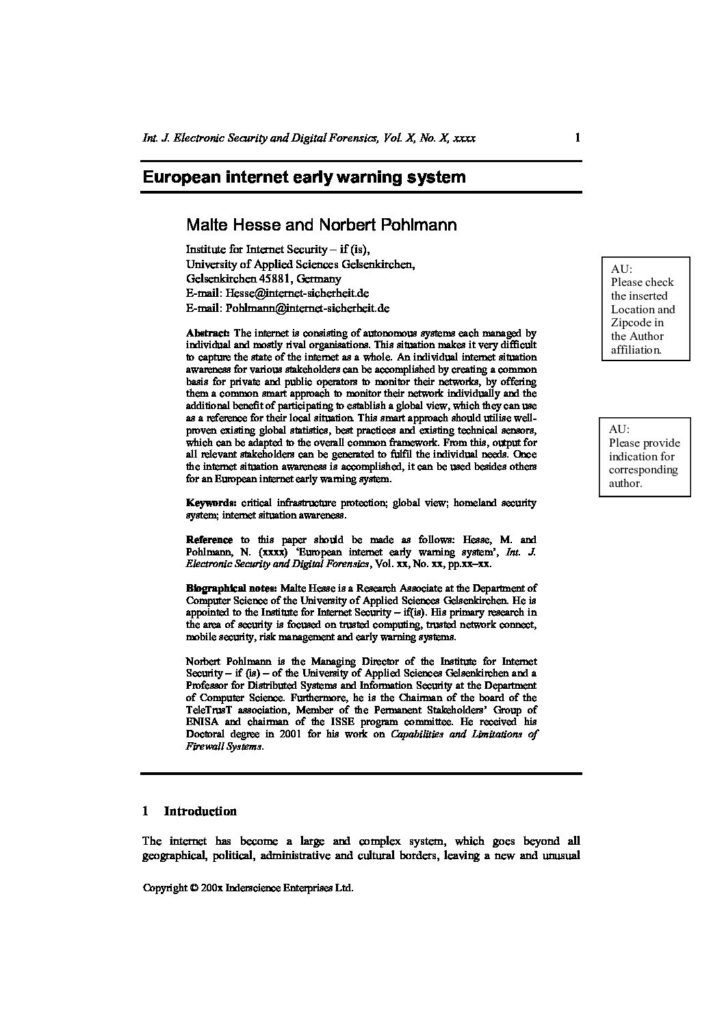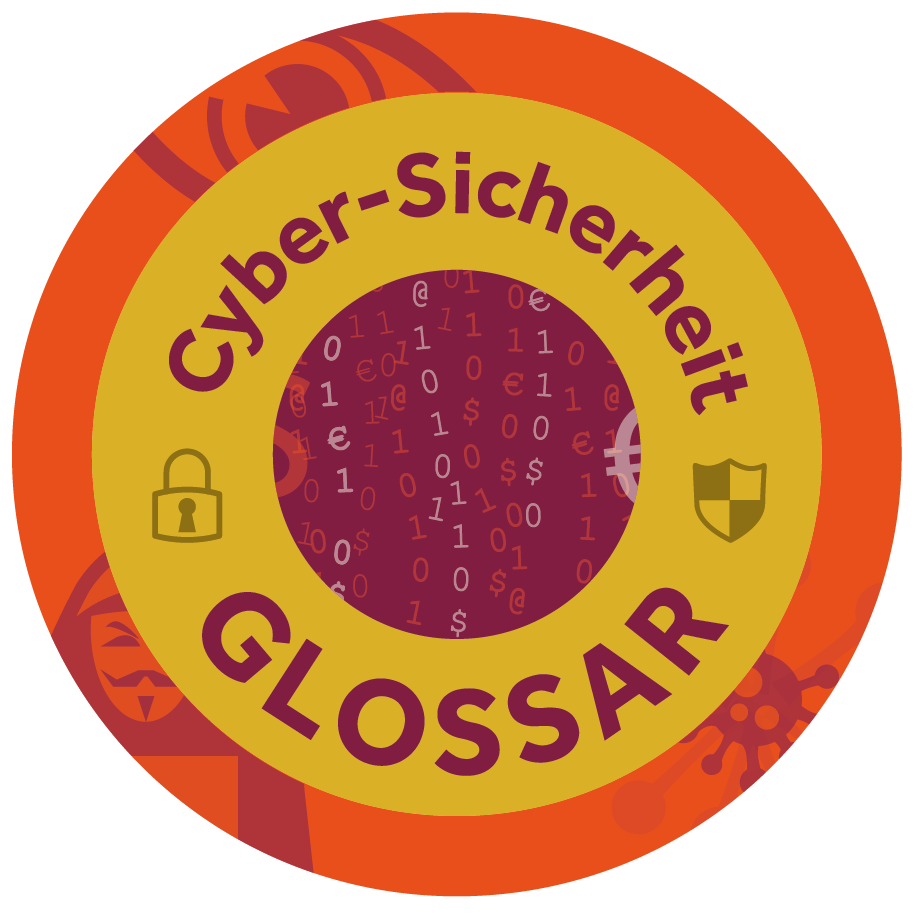M. Hesse, N. Pohlmann:,
“European Internet Early Warning System”.
In International Journal of Electronic Security and Digital Forensics,
London 2009
The internet is consisting of autonomous systems each managed by
individual and mostly rival organisations. This situation makes it very difficult to capture the state of the internet as a whole. An individual internet situation awareness for various stakeholders can be accomplished by creating a common basis for private and public operators to monitor their networks, by offering them a common smart approach to monitor their network individually and the additional benefit of participating to establish a global view, which they can use as a reference for their local situation. This smart approach should utilise wellproven existing global statistics, best practices and existing technical sensors, which can be adapted to the overall common framework. From this, output for
all relevant stakeholders can be generated to fulfil the individual needs. Once the internet situation awareness is accomplished, it can be used besides others for an European internet early warning system.
The internet has become a large and complex system, which goes beyond all geographical, political, administrative and cultural borders, leaving a new and unusual challenge to our society. Currently, society is undergoing fundamental changes cased by ever increasing connectivity and the penetration of the information society, in which the internet with its plethora of services plays an important role. Now, some parts of the
internet have secretly emerged to be critical assets. Yet, the importance is growing, due to the convergence of fixed and mobile networks and evolving all-IP concepts. The internet is not regulated and consists of self-governed autonomous systems each managed by individual organisations mostly part of the private sector. Currently, there are more than 27,000 different autonomous systems advertised in the global routing table, information
we have calculated with an if(is) tool called AiconViewer developed by Dierichs (2006) and available on our website. Private organisations are exposed to a high level of competition making an exchange of important management information between them impossible. The precise internal network structure, communication connections and topologies are often treated as being confidential by the network operators as Pohlmann
and Proest (2006) experienced.
Besides the management of their own autonomous systems, the organisations also have to develop a strategy to exchange data with other autonomous systems. Based on statistics of the AiconViewer, there are about 60,000 logical connections between autonomous systems at the moment. Main factors for this routing of data are
1 the type of autonomous systems and the services it provides
2 (company) policies
3 more evident – financial aspects.
Weitere Informationen zum Thema “Cyber-Sicherheits-Frühwarn- und Lagebildsystem”:Artikel:
„Kommunikationslage im Blick – Gefahr erkannt, Gefahr gebannt“
„An ideal Internet Early Warning System“
„Ideales Internet-Frühwarnsystem”
„Internet Situation Awareness“
„Probe-based Internet Early Warning System”
„Internet Early Warning System: The Global View”
Vorträge:
“Internet Situation Awareness”
“Internet-Frühwarnsysteme“
Vorlesung: „Cyber-Sicherheit Frühwarn- und Lagebildsysteme“ Glossareintrag: “Cyber-Sicherheits-Frühwarn- und Lagebildsystem” Informationen über das Lehrbuch: „Cyber-Sicherheit“
kostenlos downloaden | 




